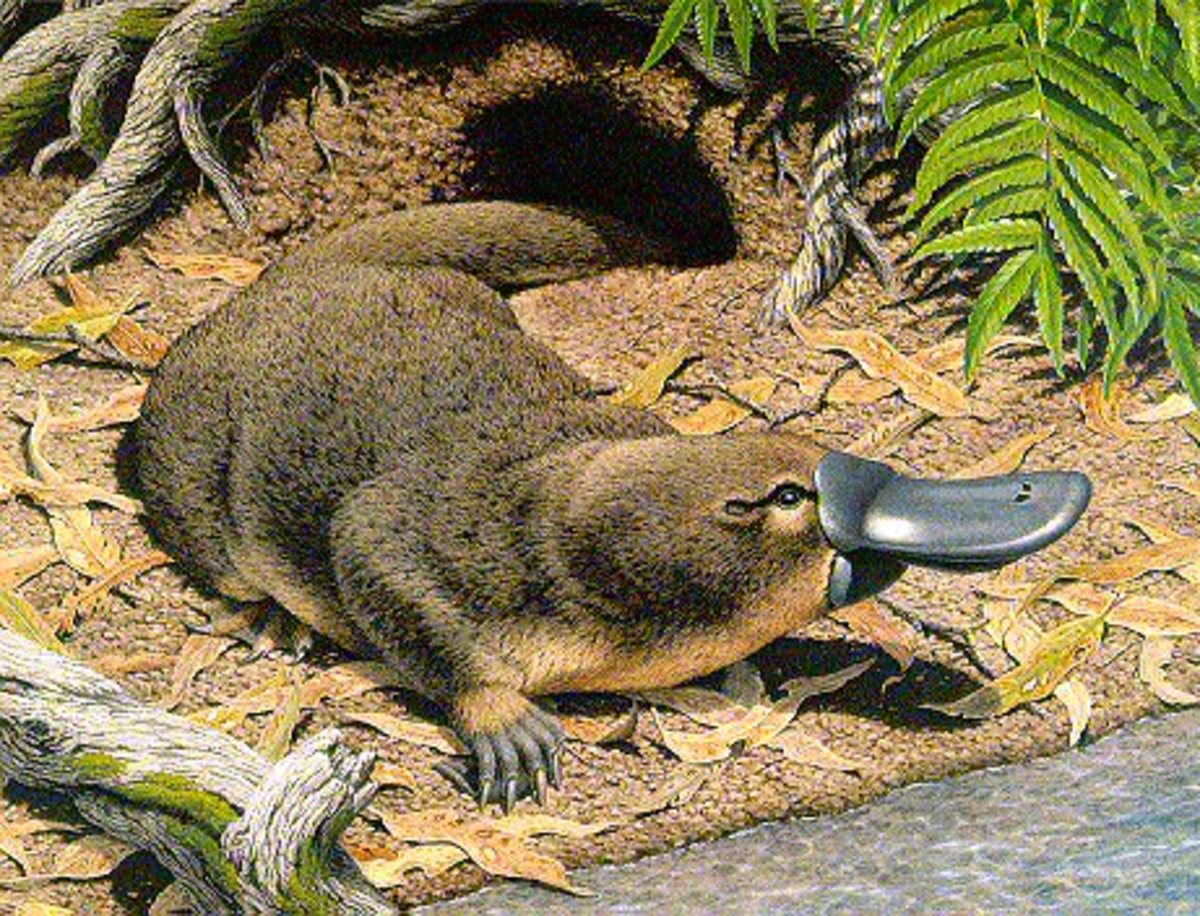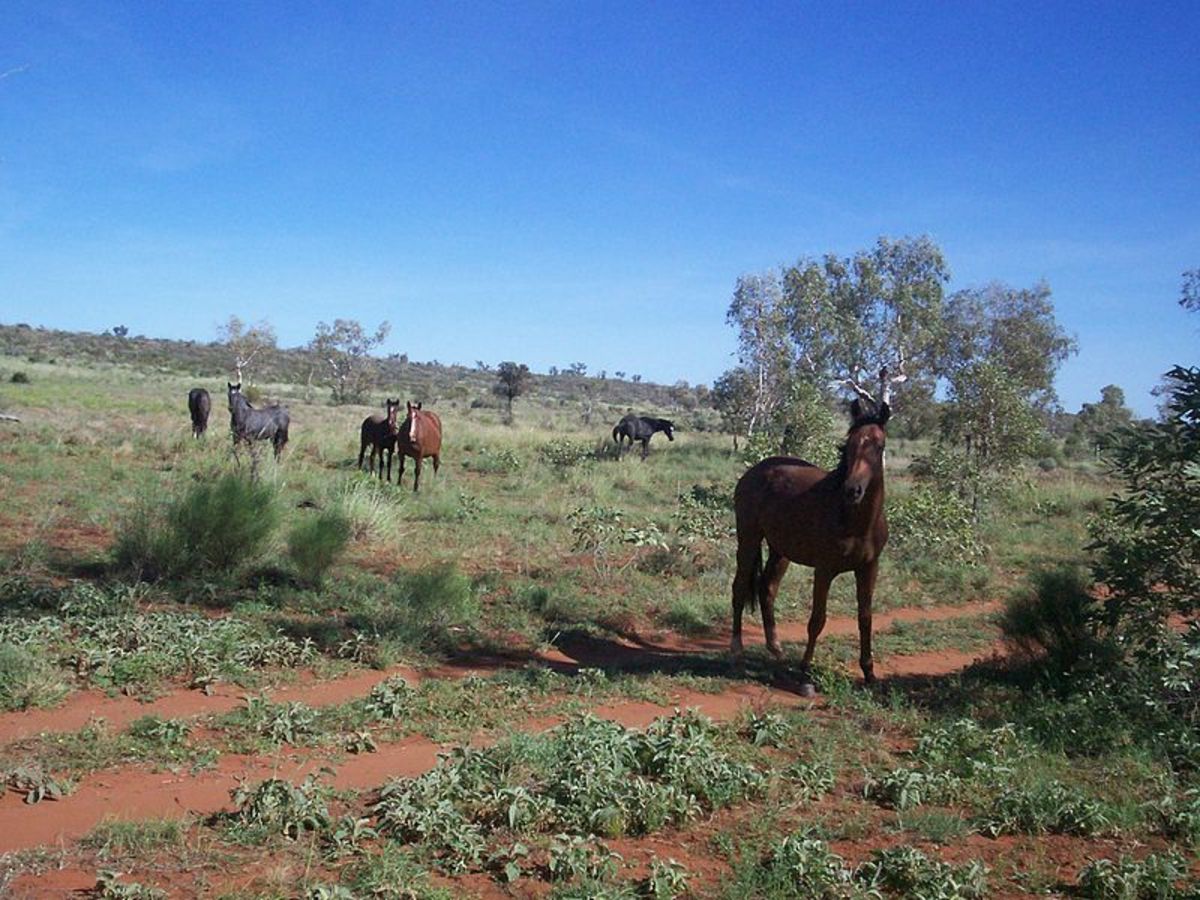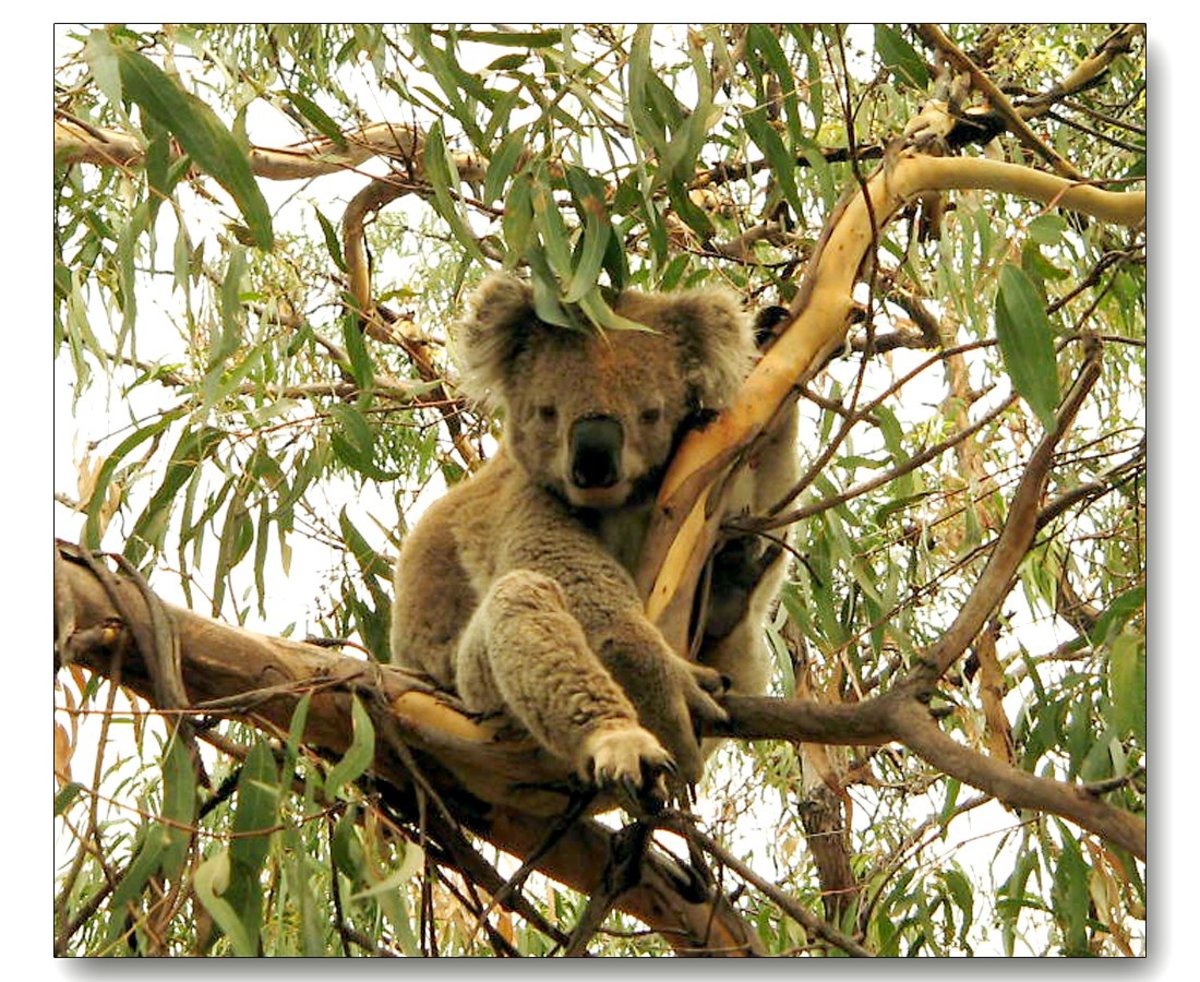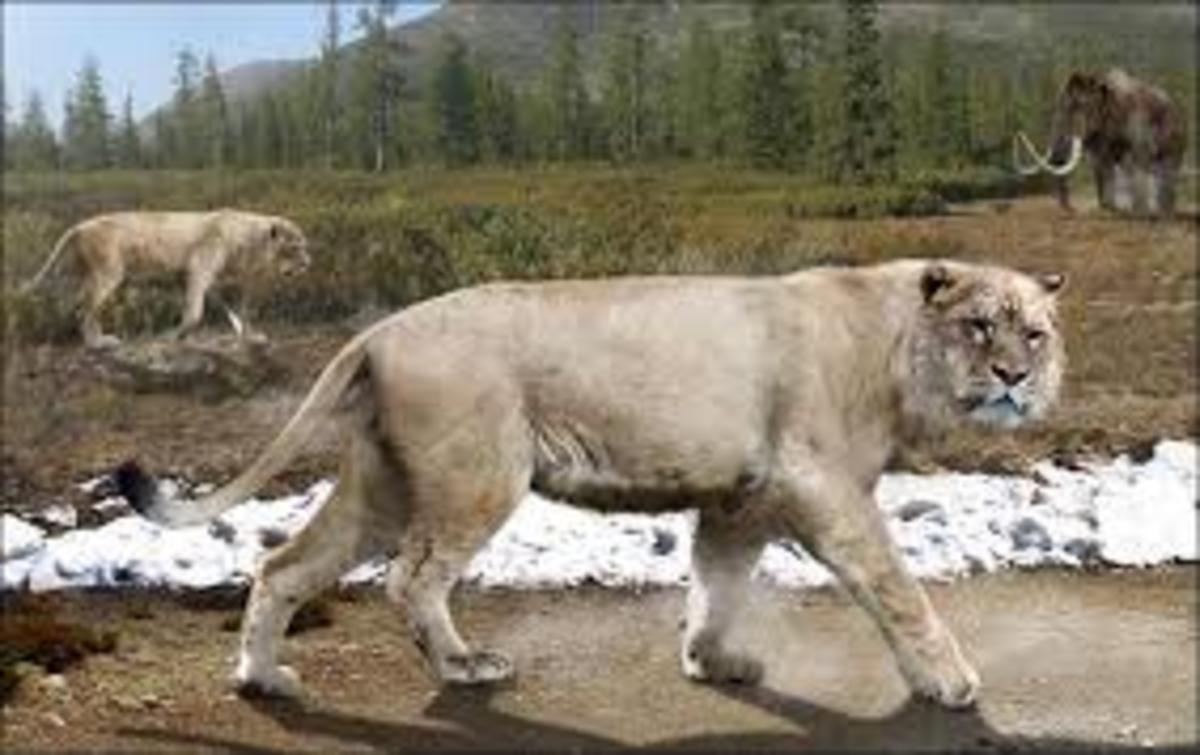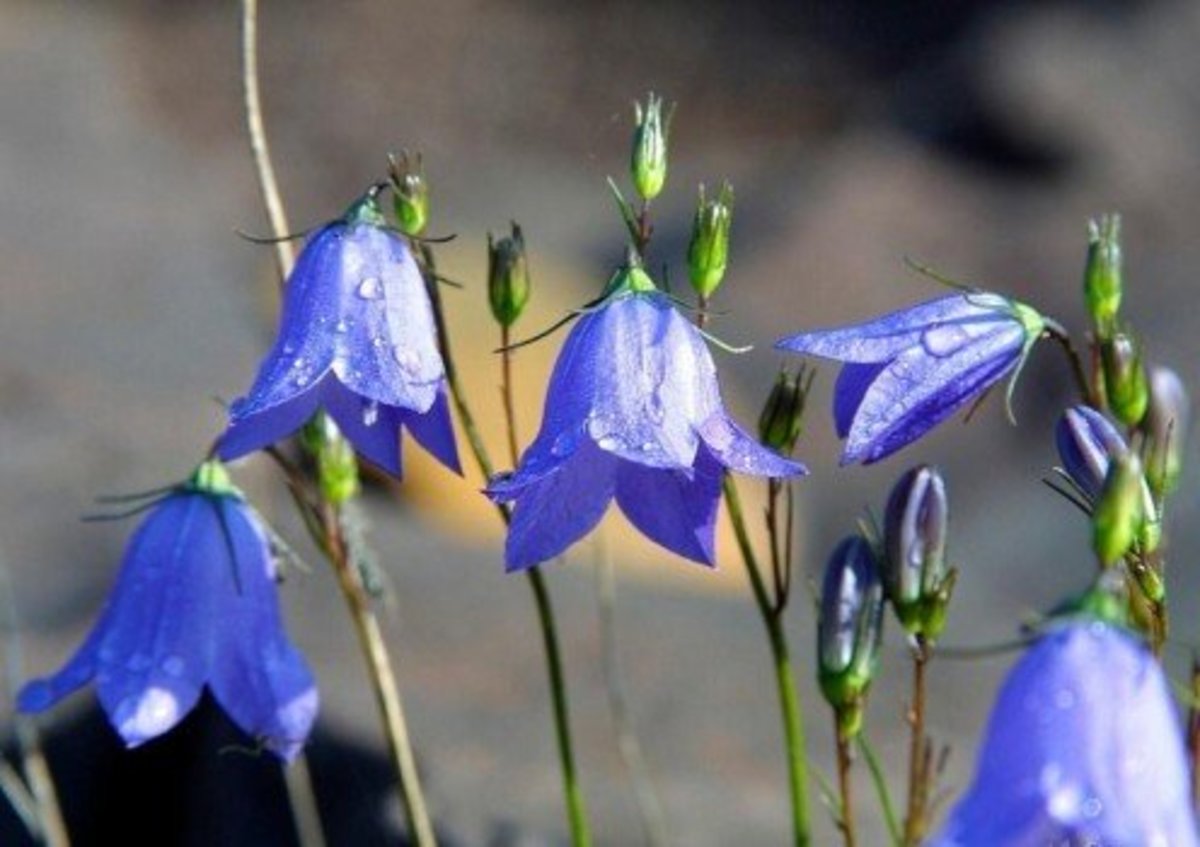A Guide To Monotremes And Marsupials
Monotremes: The Egg Laying Mammals
The monotremes are among the oldest surviving mammals on the planet, and yet very little is known about their history. Fossils are extremely rare and thus far have only been found in Australia. Which is you’re most likely to encounter a living one, but they can also be found in New Guinea and Tasmania. There are six species alive today, conforming to two basic types, the platypus being one, and the 5 species of echidna being the other.
A Beautiful Oddity
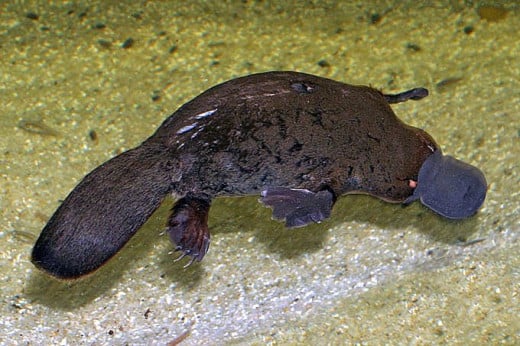
The Platypus In Action
The Platypus
The duck-billed platypus is the only living member of its family and inhabits streams and lakes in the eastern part of Australia and Tasmania. The male is slightly larger than the female, measuring around 2 feet in length and weighing in at around 4 pounds. The platypus’ short, dense and soft fur is waterproof, which is an extremely important adaptation to an animal that spends a significant portion of its time in the water. It’s a very skilful swimmer, using its flattened tail as a rudder and obtaining the propulsion it needs from its webbed feet. The platypus is active mainly at dawn and dusk, when it silently searches for food such as crayfish, shrimps, larvae of water insects, snails, tadpoles, worms and small fishes. Captive platypuses are known to eat about half their own body weight in just one day.
They mate from August to October in water, after the male and female have swum in circles and frolicked in what is one of the more unusual and intricate courtships in the mammalian world. The female then carries wet leaves into a deep and elaborate burrow. They will serve as warm bedding for her eggs (1-3 usually). The wet leaves also help prevent the eggs from becoming too dry. After plugging up the entrance to her den, she proceeds to curl her body around them. She only leaves the den to wet her hair and defecate, which she normally has to do every few days or so.
When the eggs hatch the youngsters are blind and naked, and about an inch long. They are fed by milk which flows through from pores opening on the mother’s belly. The young instinctively lap it up. They don’t venture out of the burrow until they are least 16 weeks old, fully furred and around 12 inches long. During this time the male will use a shelter nearby, as the female will not tolerate his presence whilst she is with young.
Another Beautiful Oddity
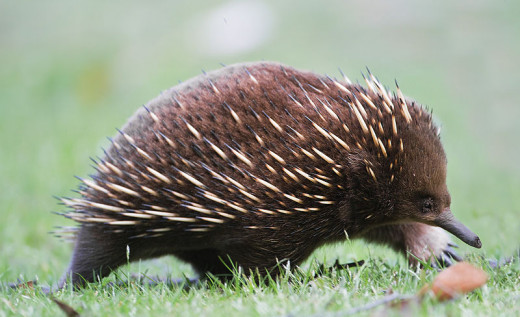
Profiling The Echidna
The Echidnas
The echidnas or spiny anteaters are completely different in appearance, with their furry bodies covered with sharp spines, formed from modified hairs. They are rather round creatures with short legs and broad feet equipped with strong claws for digging. The jaws are long and narrow, ending in a short snout in two of the echidna species, while the other three possess very long snouts. All five species possess a long, sticky tongue that is shot in and out of the mouth, as they hoover up ants, other insects and worms.
In the breeding season a female echidna develops a temporary pouch into which the single egg (occasionally 2) is transferred as soon as it is laid. How exactly this is done is unfortunately not known, but the egg hatches after an incubation period of 7-10 days into a naked, blind baby, less than an inch long. It laps up the yellowish milk that flows along several hair tufts from the ducts of the milk glands within the pouch. The youngster grows inside the pouch until its spines begin to develop between the age of 6 and 8 weeks. At this time, it’s grown to around five inches long. It’s at this point that the mother fishes her baby out of the pouch, depositing it in a sheltered spot. It’s not known whether she continues to feed and nurture it, or whether she simply leaves it to its own devices.
Marsupials: The Pouched Mammals
The marsupials are the famous pouched mammals, and like their monotreme relatives are among the most primitive of all mammals. The name marsupial literally means ‘pouched one,’ but it’s important to remember that only female marsupials have a protective pouch of skin positioned around their nipples. While the females do not lay eggs, her offspring are born at such an early stage of development that they look like embryos. However, the young are always strong enough to crawl into the mother’s pouch from the birth canal or cloaca, even though they are blind and naked. The young marsupial stays inside the pouch attached to a teat, feeding and growing for several weeks, the exact length depending on the species. When sufficient time has passed, it will start to explore the mother’s body outside of the pouch, but will retreat back inside if danger threatens.
In comparison to placental mammals (mammals that develop inside a placental womb-e.g. dogs, cats, whales, humans), marsupials are rather small brained creatures and with comparatively little intelligence; which explains why, on most continents they lost the evolutionary battle to the quicker, more efficient placental mammals. Today they are found only in a few areas, North and South America and Australasia. They owe their survival to the fact that these continents were isolated from the parts of the world where placental mammals were evolving at a rapid rate.
The North American Marsupial
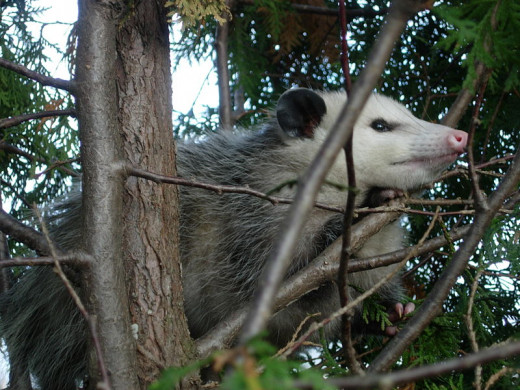
Playing Possum
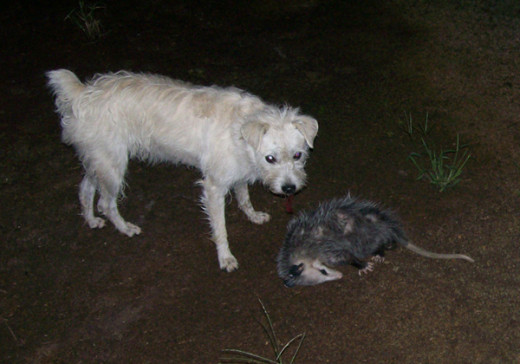
American Opossums
The only marsupials living in the Americas in the present era are the opossums, of which there are some 65 species. The best known and most successful is the Virginian or common opossum, which, until comparatively recently was confined to South America. However, over thousands of years, it flourished and invaded North America, where it is still spreading rapidly today. At present, it’s the only marsupial to have successfully colonised North America. It owes its extraordinary success to its adaptability, varied diet, rapid breeding rate and its famous habit of playing dead, or ‘playing possum’ to use the correct expression. The common opossum looks rather like a long haired rat with a prehensile, naked tail, although it must be noted that it is the size of a domestic cat. The female gives birth after only 12 days gestation to pea sized babies weighing less than half an ounce. Although 20 babies may be born, only about a dozen survive as the mother has only 12 or 13 nipples inside her pouch. The youngsters do not emerge for 100 days, and then they cling to the mother’s back until they become too large.
The other species of opossum either look like the common opossum or are a similar size, or they are much smaller, being mouse or rat sized.
Most opossums are nocturnal, searching most of the night for all kinds of food, which ranges from small animals, insects and carrion to fruit and grain. They lead rather squirrel like lives, although the yapok or water opossum lives more of an otter style life, spending much of its time in the water. It’s even evolved webbed feet to help it move through the water. It rests and breeds in small burrows in the river bank and its diet consists of mostly shrimps and small fishes.
Marsupial Cats
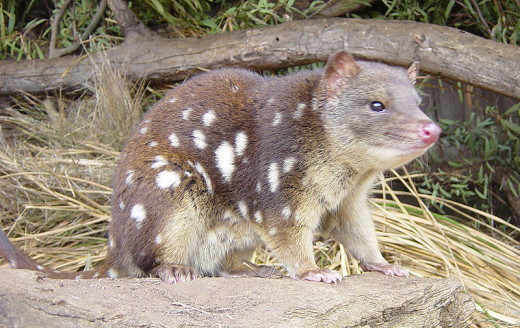
The Devil
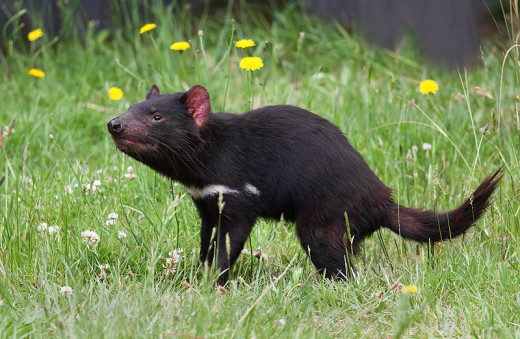
Its Name Says It All
The Last Tasmanian Wolf
Is It A Mouse?
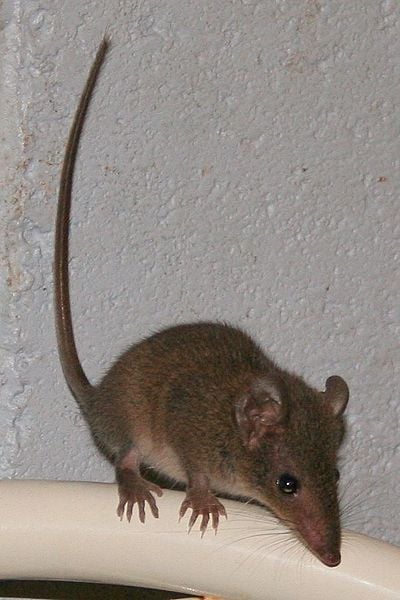
Australian Marsupials
In the Australasian region, the marsupials have evolved over a long period of time to give a wide range of marsupial mammals adapted to its various habitats and niches. There are species which are very similar to placental mammalian species in appearance and adaptations, and yet they are all marsupials, possessing that characteristic pouch. So in a sense, there are marsupial cats, mice, rats, wolves and moles.
The several species of marsupial native cats are better known as dasyures or quolls, the largest species, known simply as the quoll is actually around the same size of a big cat, while the others all look like small placental carnivores, which isn’t at all surprising since the dasyures are small flesh eaters. A fierce relative is the Tasmanian devil, which is the largest native carnivorous mammal on the continent, as it seems that the thylacine is now extinct. The ‘devil’ has certainly been persecuted by settlers, as it made a nuisance of itself by stealing chickens. It’s in no immediate danger of extinction, although it has retreated to the more remote and rocky parts of the large island. It probably looks more ferocious than it really is. It has enormous jaws which it opens wide when frightened, at the same time giving a wheezing snarl. The heavily built body is supported on rather short legs. It has an extremely voracious appetite and feeds on a variety of animals including rat-kangaroos, wallabies, lizards and birds such as parrots and quail.
The Tasmanian devil is closely related to the thylacine or Tasmanian wolf, which is dog like and around 4 feet long. Its grey brown back has 17 dark vertical stripes. This appearance has also led to its other nickname- ‘tiger.’ However, it’s more than likely that this marsupial tiger is now extinct, having been exterminated on the Australian mainland by settlers and the dingo, and in Tasmania by settlers. No living specimen has been seen for years and all reported recent sightings were probably domestic dogs.
The marsupial mice are similar in appearance and size to the house mouse. Their noses are usually more pointed, however, and the tail is shorter and fatter. They are mostly carnivorous, however, unlike the omnivorous rodents. They are attractive little animals with small pouches. Quite often there are as many as 10 young, and they will cling to the mother’s sides and back when they leave the pouch. Certain species, such as the crest-tailed marsupial rat, are as large as a rat, while others look more like the jumping jerboas.
The Eastern-Barred Bandicoot
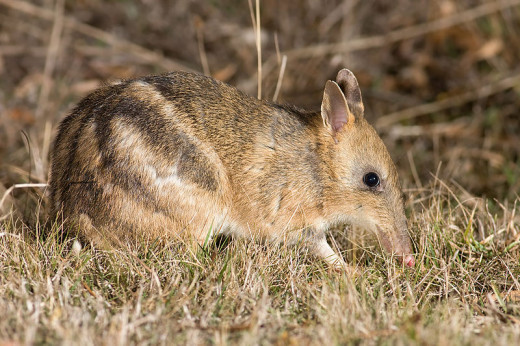
Bandicoots
The bandicoots of Australia look rather like large shrews. Their name is a corruption of an Indian word meaning pig-rat and its thought that the names origins lie with 18th century European explorers. The 19 species inhabit open plains, thick grass along the banks of swamps and rivers, thick scrub and forest. However, member of the genus Perameles are found near towns and cities and frequently annoy gardeners by digging holes in their lawns while searching for insects.
Female bandicoots usually have 8 mammary glands, although 6 or 10 are not uncommon. These numbers are quite sufficient to cater for the 2-6 young born in a litter. The pouch opens downwards and backwards and the newly born young possess tiny claws, which are shed soon after they have been used to help the animal reach the pouch.
Although bandicoots are protected in Australia by the Fauna Preservation Act, several species are in danger of extinction, mainly because the Australian aborigines hunt them for food.
Bear-Like Marsupial
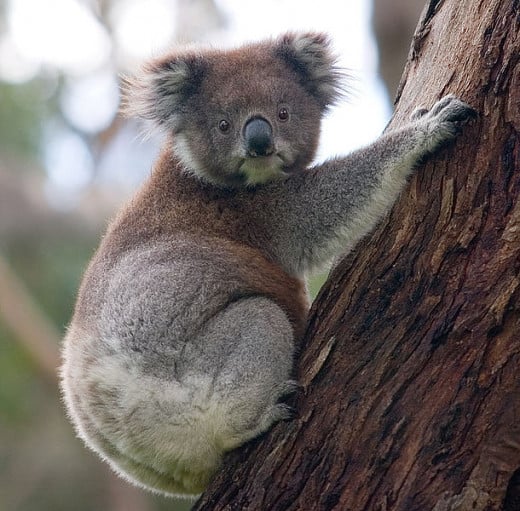
Blue-Eyed Bear
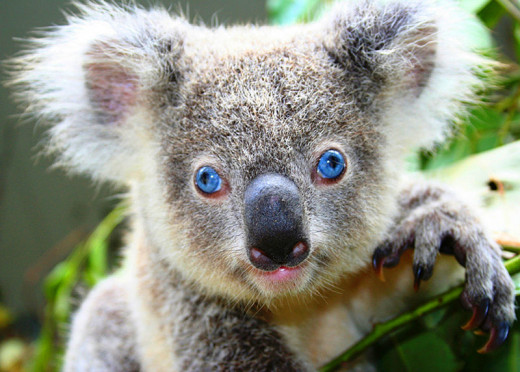
The Sugar Glider
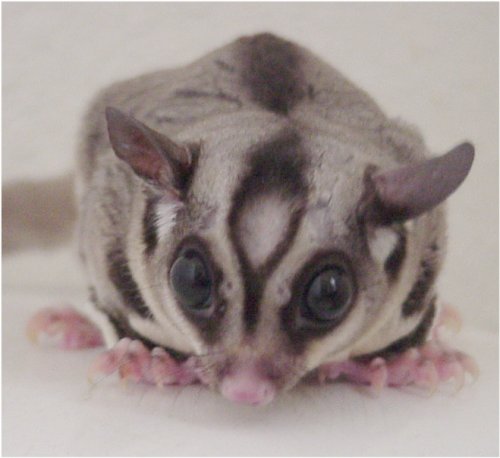
The Ground Cuscus
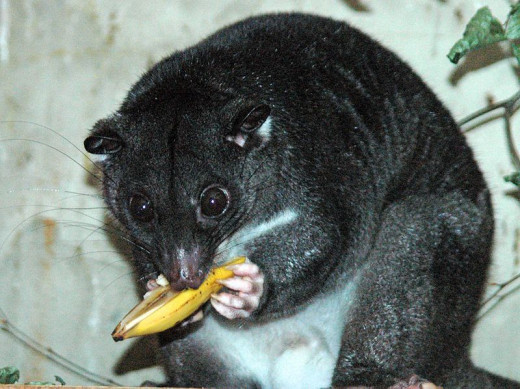
The Koala And Its Relatives
The koala belongs to a family of marsupials called phalangers. It’s a highly varied family, ranging from mouse-like, squirrel-like and lemur like forms, as well the familiar teddy bear-like koala. It also includes the Australian opossums, the name which Captain Cook gave to the ring-tails at Cookstown, in 1770, because of their superficial resemblance to the American opossums. Today the Australian ones are often called ‘possums’ to distinguish them. The more suitable name phalanger refers to the adaptation of some of the phalanges (finger and toe bones) to aid in climbing.
The koala is undoubtedly the most loved of the phalanger family and perhaps the whole order of marsupials. It has a rather appealing yet comical look, with its large head, big hairy ears and large nose. The koala is confined to the eucalyptus forests in eastern Australia, as the leaves and young bark of these ‘gum’ trees make up most of its diet. The dense, woolly fur is greyish above and whitish below, with a vestigial tail at the rear. Cheek pouches and a large caecum aid in dealing with the specialised diet, over a kilogram of leaves being eaten every day. The name koala means ‘no drink’ and indeed the animal does not do so.
The female bears only 1 young at a time. It stays in her backward opening pouch for 6 months, after which time it climbs on her back and travels piggyback style. Sadly in recent years much of their natural habitat has been destroyed for agriculture and towns, and they have been slaughtered for their warm, durable, beautiful fur, numbers have been drastically reduced during this century. However, they are now protected and are being re-established in certain areas, such as Victoria. Thankfully the koala is in no immediate danger of extinction.
Interestingly there are five species of flying phalanger or ‘gliders’ as they are called, due to the fact that they take great leaps from tree to tree, using their gliding membrane. This membrane is a web of loose skin that runs between the front and hind limbs. The fluffy tail is used for steering while in the air. They can cover distances of around 300 feet in just a single glide. The largest of these marsupials is the greater gliding possum, a very attractive animal with soft and silky fur. During the day these animals shelter, either singly or in pairs, in hollows high up in trees. They rarely come down to the ground but occasionally will journey across open ground to another tree. During the breeding season their loud gurgling shrieks pierce the air.
The largest members of the phalanger family are the cuscuses, with the spotted cuscus being about the size of a domestic cat but more elongated. The sexes of this species are very distinct, the male being covered with large, irregular, pale blotches, while the female is a plain colour. The young go through a sequence of colour changes as they grow. Cuscuses are arboreal animals, moving around slowly at night, surprising small roosting birds and lizards, which they gobble down enthusiastically. However, the bulk of their diet consists of leaves and fruit.
The brush-tailed phalanger is the most widely distributed Australian marsupial, being quite plentiful over most of its range. This is despite the fact that it is hunted and killed for its fur, which is sold as ‘Adelaide Chinchilla.’ It’s one of the few phalangers to possess a prehensile tail, similar to a monkey.
The Marsupial Bulldozer
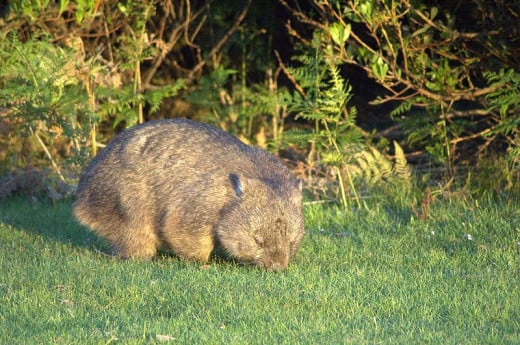
Wombats
The hairy, chunky wombat is very similar in appearance to the koala, but it is a powerful digger rather than a climber. It’s just less than 3 feet long and lives on the rough hillsides of coastal, South Western Australia and Tasmania, where it moves about slowly with a wobbling gait. It’s the marsupial bulldozer, digging extensive burrows, up to 100 feet long. Its chisel shaped rodent like front teeth grow continually but are worn down to a reasonable length by the animal eating bark, roots and leaves. The wombat lives alone, except during the breeding season. Like the koala the female has only one offspring a year.
The other surviving wombat species is the softer hairy nosed wombat. It’s interesting to note that fossil evidence has shown that as recently as 40,000 years ago there was a giant wombat species as large as a rhino, known as Diprotodon.
How Kangaroos Survive In The Outback
Kangaroo Boxing
Kangaroos
There are some 55 species in the family of kangaroos and wallabies, which vary in size from the small musky rat-kangaroo of the Queensland rainforests, which reaches about a foot in length, to the red and grey kangaroos, which can reach nearly seven feet in height. All are jumpers, the large, powerful hind legs propelling them along in leaps and bounds with the long, thick tail being used as a prop, balancing organ or extra leg. Most members are nocturnal, resting in grassy ‘nests’ during the day. Sometimes they sunbathe on warm afternoons, but they become most active at dusk, searching for food until dawn. Most species graze or browse on the vegetation, but the rat-kangaroos eat animals, such as insects as well.
The red and grey kangaroos are the giants of the ‘roo’ family. An adult male or ‘boomer’ stands seven feet high, and when moving at a slow pace he covers between four and six feet in a leap. A leap can cover more than 30 feet, when he is travelling at 30 mph over a short distance of open country. Although the two large species are called red and grey, various shades of red, brown, grey or black predominate. Males of the red kangaroo are usually rufous while the females are bluish grey and often called ‘blue fliers.’ Although it is difficult to tell the species at a distance, in the wild the red inhabits the open plains, while the grey prefers the open forests. The third species of kangaroo, the wallaroo lives in rocky, hilly areas.
The Red-Necked Wallaby
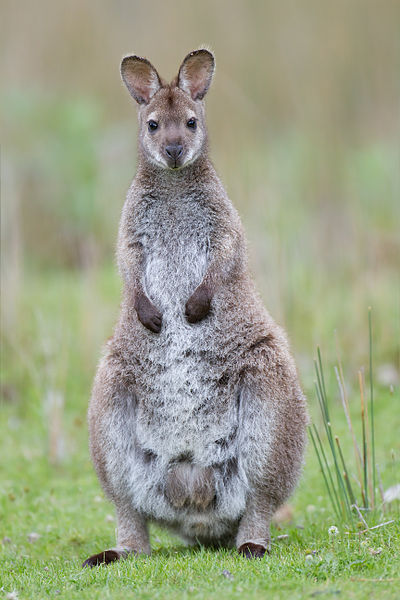
Wallabies
Wallabies are very similar in habit to kangaroos but are about half their size. The hare wallabies, as their name suggests, are rather hare like but slightly larger than true hares. They resemble them in their movement and to an extent their behaviour. They usually live alone and rest by day in a ‘form,’ scratched in the ground under the shade of a bush or tufts of grasses. At night they nibble the vegetation. The rock wallabies usually inhabit rocky ranges and boulder-strewn outcrops. They are most common in areas of central Australia. Their agility among the rocks is absolutely astonishing, some being able to leap more than 12 feet horizontally. Scrub wallabies inhabit swampy areas with thick scrub, grasses and fern tangles, as well as the undercover of heavy forests. They have been hunted and trapped for their meat and fur, and so, over a large part of their range, their numbers have sadly dwindled.
Some readers may be surprised by the fact that there are some five species of kangaroos in New Guinea and two species in North Eastern Queensland that spend most of their time in the trees. Tree kangaroos are very agile, often travelling rapidly from tree to tree, and leaping as much as 30 feet from one branch to a lower one. Unlike those of their ground relatives, the hind and forelimbs are of nearly equal length. The pads on the feet are covered with non-slip, roughened skin and some of their nails are curved to assist in gripping. The long, furred tail is the same thickness down its entire length and, although not prehensile, it acts as a balancing organ. Tree kangaroos are not rare, but as they inhabit rather inaccessible areas their behaviour is not well known. They do occasionally descend to the ground, usually congregating in small groups, feeding on fruit and leaves.


